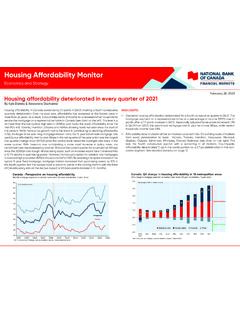Transcription of Online library of Quality, Service Improvement and ...
1 Online library of Quality, Service Improvement and Redesign tools Stakeholder analysis NHS England and NHS Improvement Stakeholder analysis What is it? Actively engaging a wide variety of people such as clinicians, administrative staff, patients and user groups will help you deliver your change project. A stakeholder analysis enables you to identify everyone who needs to be involved and assess how much time and resource to give to maintaining their involvement and commitment. When to use it Carrying out stakeholder analysis as an early step in your change project can help you avoid conflict and delays caused by inadvertently failing to involve key people.
2 How to use it 1. Identify your stakeholders Start by brainstorming a list of all the people and groups likely to be affected by the proposed change. You could bring a small group of well-informed people together to do this or start the list yourself and share it with others so that they can add to it. Grouping your stakeholders according to the following 9 Cs' will help to ensure you have included all relevant stakeholders: commissioners: those who pay the organisation to do things customers: those who acquire and use the organisation's products collaborators: those with whom the organisation works to develop and deliver products contributors: those from whom the organisation acquires content for products channels.
3 Those who provide the organisation with a route to a market or customer commentators: those whose opinions of the organisation are heard by customers and others consumers: those who are served by our customers: ie patients, families, users champions: those who believe in and will actively promote the project competitors: those working in the same area who offer similar or alternative services. As this classification system came from industry, you may find that some of the categories have crossover when grouping stakeholders from a health and care perspective.
4 Don't be too strict with your classifications, the list helps you look for the broad range of possible stakeholders who may be involved in your project. Quality, Service Improvement and Redesign Tools: Stakeholder analysis 2. Prioritise your stakeholders Once you have generated the list of names, analyse it in terms of power, influence and the extent to which they are affected by the project or change. Write each name into the relevant sector of either a four or nine sector table: Figure 1: Four sector table Satisfy Manage High power Opinion formers.
5 Keep them satisfied Key stakeholders who should be fully engaged with what is happening and review through communication and consultation. your analysis of their position regularly. monitor Inform Low power This group may be ignored if time and Patients often fall into this category. It may be resources are stretched. helpful to take steps to increase their influence by organising them into groups or taking active consultative work. Low impact/stakeholding High impact/stakeholding Larger projects with many stakeholders may use a nine sector table to provide greater definition of the stakeholders.
6 Figure 2: Nine sector table High power Moderate power no power Little or Little or no impact Moderate impact High impact Quality, Service Improvement and Redesign Tools: Stakeholder analysis Having identified the stakeholders, prepare a readiness for change matrix to see who is for or against the proposals. This will also help you define any influencing activities that might be needed. You may also wish to conduct a continuum of commitment analysis (see commitment, enrolment and compliance). Figure 3: Readiness for change matrix In favour Neutral Opposed Dr Tweed Dr Taylor Movement needed A&E.
7 3. Understand your key stakeholders How are your key stakeholders likely to feel about and react to your project? What is the best way to engage and communicate with them? Involve your stakeholders in developing your thinking asking their opinions can be the first step in building a successful relationship with them. These prompts will help develop your understanding: What financial or emotional interest do they have in the outcome of your work? Is it positive or negative? What motivates them most? What information do they want from you?
8 How do they want to receive information from you? What is the best way of communicating your message to them? What is their current opinion of your work? Is it based on accurate information? Who influences their opinions generally and who influences their opinion of you? Do some of these influencers therefore become important stakeholders in their own right? Quality, Service Improvement and Redesign Tools: Stakeholder analysis If they are unlikely to be positive, what might convince them to support your project?
9 If you don't think you will be able to convince them, how will you manage their opposition? Who else might be influenced by their opinions? Do these people become stakeholders in their own right? 4. Building trust with your stakeholders In order to work most effectively with your stakeholders, it is vital to understand their goals and expectations for the change work from their perspective. This enables you to form and build trusting relationships and share values with your stakeholder group in order to work most effectively.
10 To build trust with others, there is a range of actions and behaviours that are important to demonstrate: have empathy with others be straightforward admit mistakes keep promises show vulnerability (when appropriate). let go of grievances be consistent in thought and action. Adapted from Keegan (2015). With understanding and trust comes the knowledge that allows you to challenge your assumptions in order to frame your change in a way that matches the interest of the audience. Thinking about how your frame your messages is vital it enables you to tailor these messages and deliver them in a way that maximises impact and engagement.
















